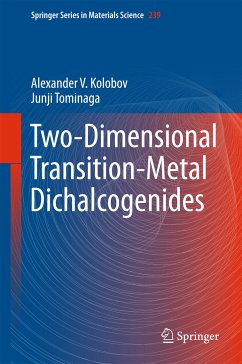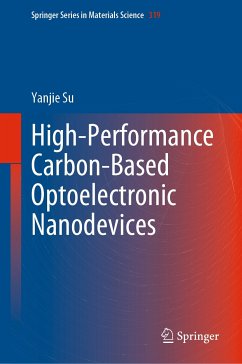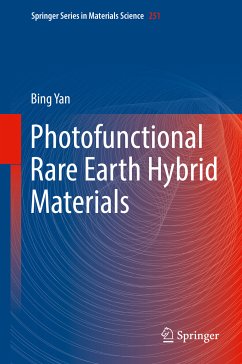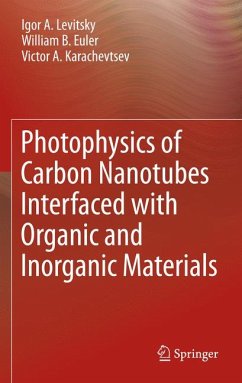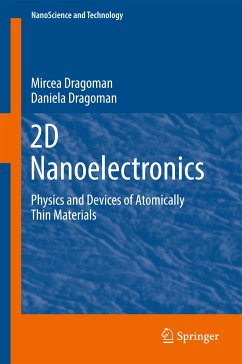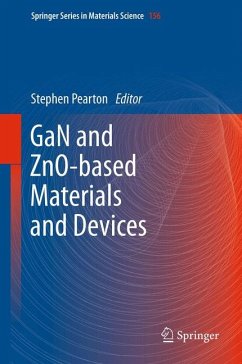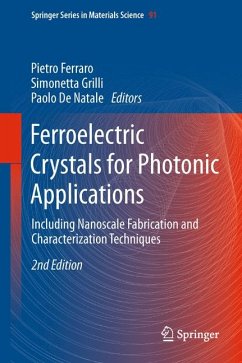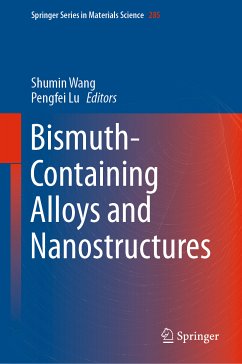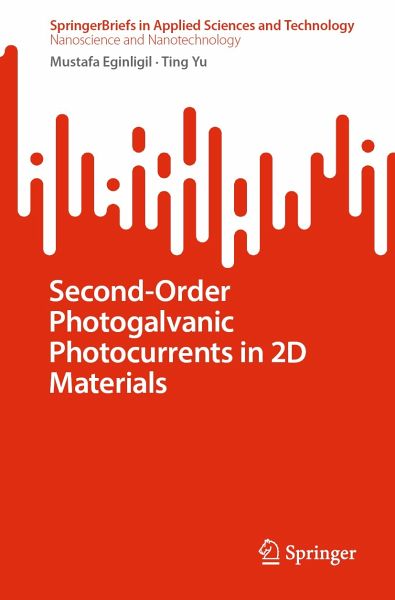
Second-Order Photogalvanic Photocurrents in 2D Materials (eBook, PDF)
Versandkostenfrei!
Sofort per Download lieferbar
40,95 €
inkl. MwSt.
Weitere Ausgaben:

PAYBACK Punkte
20 °P sammeln!
This book highlights the photogalvanic effects at low dimensions, surfaces, and interfaces, more specifically 2D materials, such as graphene and monolayer transition metal dichalcogenides. Although the phenomenology of the photogalvanic effects, which can be simply seen as photoresponse nonlinear-in-electric field, have been well-established, the microscopic understanding in each material system may vary. This book is a quick reference and a detailed roadmap starting from phenomenology and continuing with the ultimate low dimensional materials, in which the photogalvanic effects can offer a ri...
This book highlights the photogalvanic effects at low dimensions, surfaces, and interfaces, more specifically 2D materials, such as graphene and monolayer transition metal dichalcogenides. Although the phenomenology of the photogalvanic effects, which can be simply seen as photoresponse nonlinear-in-electric field, have been well-established, the microscopic understanding in each material system may vary. This book is a quick reference and a detailed roadmap starting from phenomenology and continuing with the ultimate low dimensional materials, in which the photogalvanic effects can offer a rich platform at the second-order response to an electric field. A general phenomenology of photogalvanic effect is provided in the first chapter, together with the photon drag effect which also generates a photocurrent like the photogalvanic effect, but with some distinct features, as well as somewhat puzzling similarities. Next two chapters explain these effects in graphene, starting with a necessary related background on graphene, then a particular focus on its specific phenomenology, microscopic theory, and experimental results. In a similar fashion, in chapters four and five, a necessary background for the photogalvanic effects in monolayer transition metal dichalcogenides, with symmetry analysis, microscopic theory, and experimental results is presented, along with the Berry curvature dependent photocurrent, which can also play an important role in 2D semiconductors. The second-order photogalvanic effects that have been covered so far in graphene and monolayer transition metal chalcogenides have already excited the 2D semiconductor optoelectronic research community by several means. It seems that the interests on the photogalvanic effects will continue to escalate in near future.
Dieser Download kann aus rechtlichen Gründen nur mit Rechnungsadresse in A, B, BG, CY, CZ, D, DK, EW, E, FIN, F, GR, HR, H, IRL, I, LT, L, LR, M, NL, PL, P, R, S, SLO, SK ausgeliefert werden.



